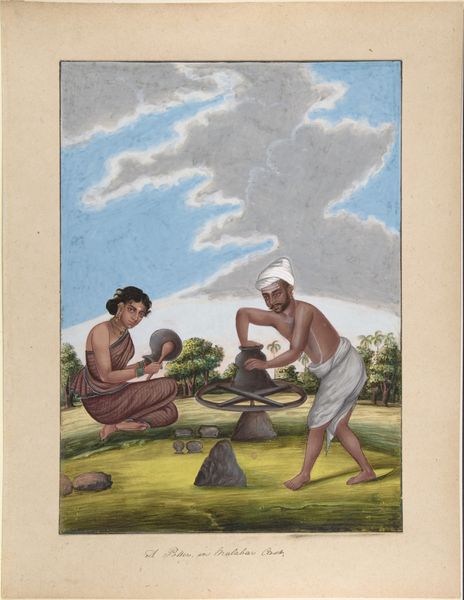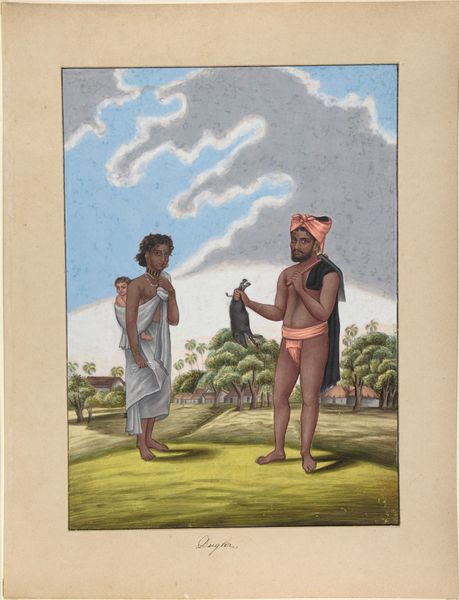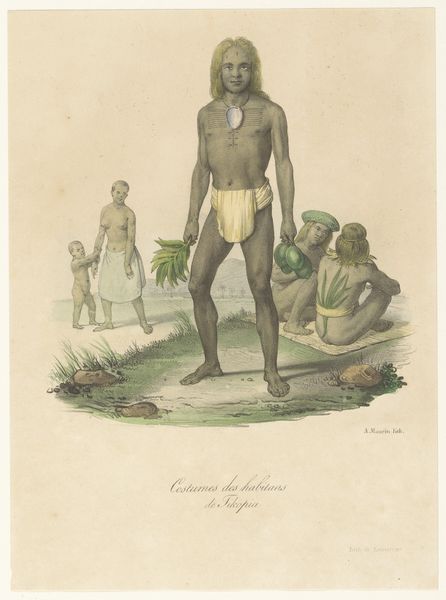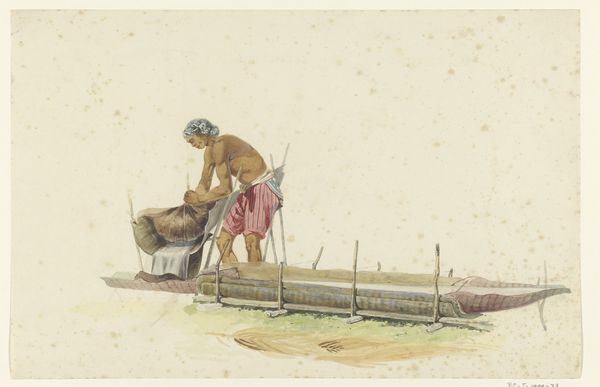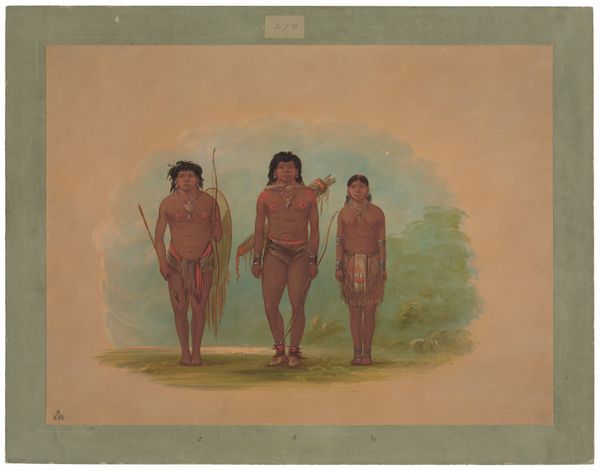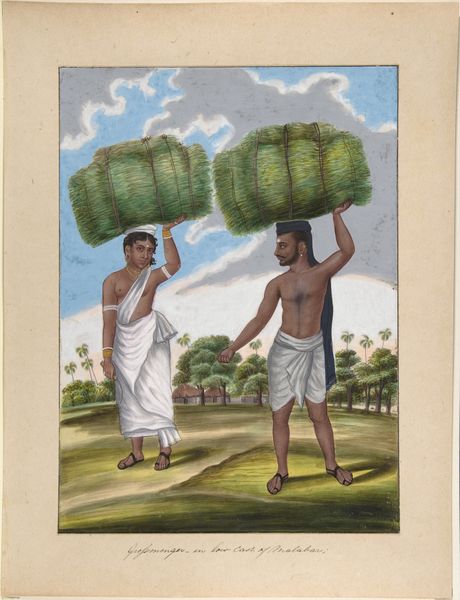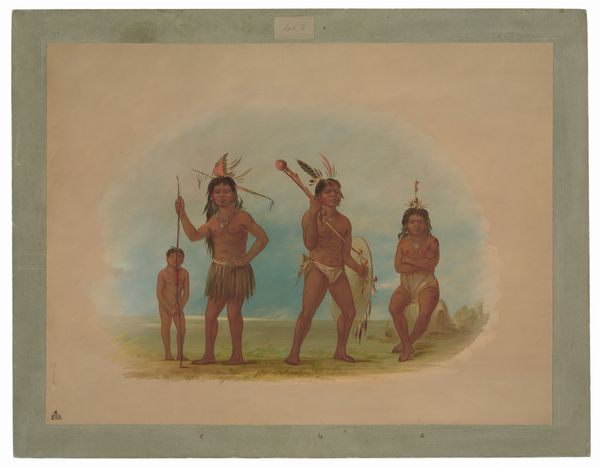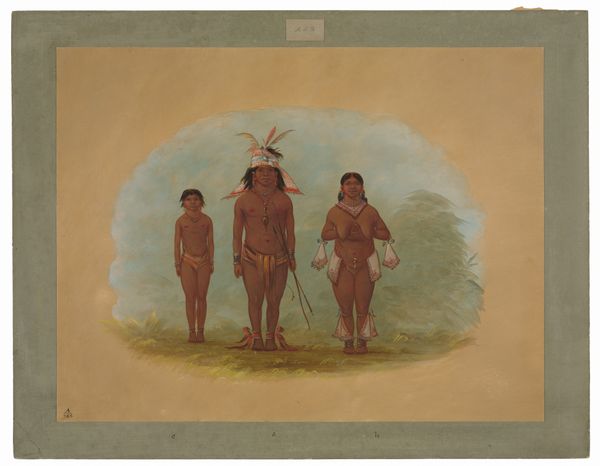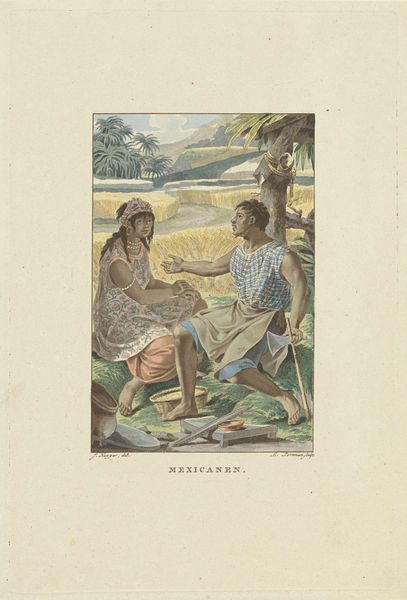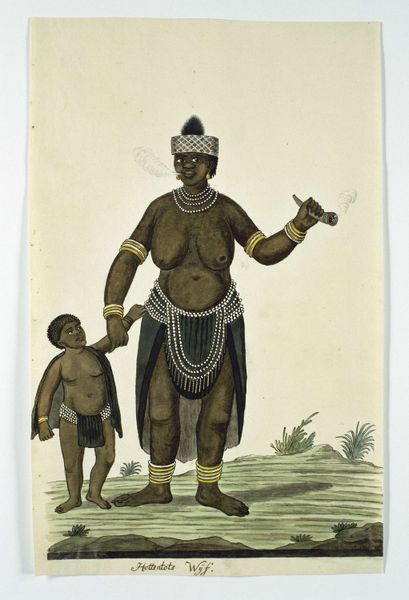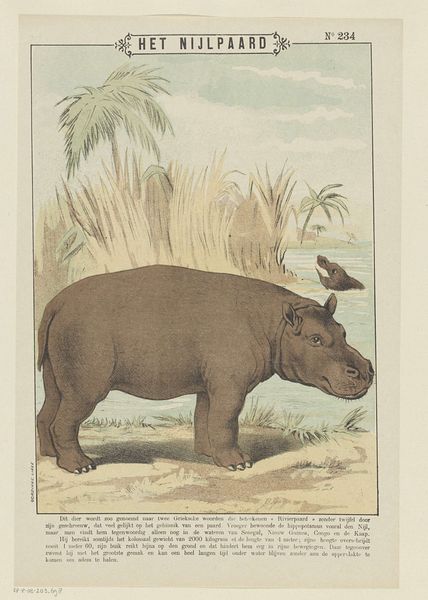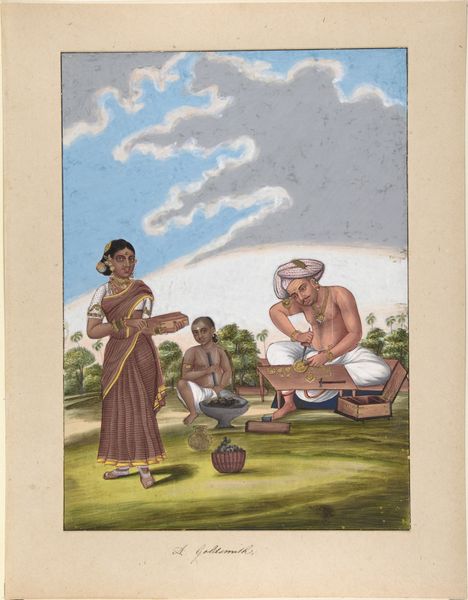
Plower in Pulla Caste, from Indian Trades and Castes 1835 - 1845
0:00
0:00
#
water colours
#
asian-art
#
landscape
#
coloured pencil
#
men
#
genre-painting
Dimensions: sheet: 14 3/8 x 10 3/8 in. (36.5 x 26.4 cm) mount: 18 1/4 x 14 1/4 in. (46.4 x 36.2 cm)
Copyright: Public Domain
Curator: This watercolor painting, believed to be from around 1835 to 1845, is titled "Plower in Pulla Caste, from Indian Trades and Castes," currently housed at the Metropolitan Museum of Art. The artist, sadly, is unknown. Editor: Immediately, the color palette strikes me – almost muted yet vivid at the same time. It feels both realistic and slightly dreamy, doesn’t it? And there's such a strong sense of stillness despite the activity depicted. Curator: It’s interesting that you mention stillness. These so-called "Company paintings" like this were very much about capturing, almost documenting, a specific view of Indian life and trades for a European audience. They were after a specific kind of “realism,” which has its own quiet artificiality. Editor: Artificiality makes sense. Look at the crisp lines of the rice paddies in the background, stacked like a woven textile right behind the foreground activity! Then that oddly pale, luminescent cow pulling the plow? There’s something very deliberate about the layering and composition that seems designed for... observation. Curator: Absolutely. The horizontal registers segment the view – labor in the immediate foreground, and the landscape offering context: perhaps the temple silhouettes? This layered design flattens perspective in favor of clarity. What’s being cultivated extends to an idea: the “orient." Editor: So, in a sense, it is an idea, carefully constructed for Western eyes. Even the title points to this, isolating and labeling a specific caste within the labor. It removes the individuality of the worker while essentializing his identity. Does the work’s formality belie a hidden, complicated intent? Curator: Well, it's a snapshot in time, filtered through a very particular colonial lens, packaged as enlightenment but reeking of cultural bias. Looking closely helps reveal those nuances, to ask critical questions about the representation of labor and identity during that era. Editor: The "dreamy" feeling, it isn't really so much a dream, but more of an observed phenomenon transformed into the desired impression; it has certainly transformed my view, indeed. Curator: Mine as well; sometimes the clearest representations muddy the waters, or vice versa, perhaps? Food for thought, I believe.
Comments
No comments
Be the first to comment and join the conversation on the ultimate creative platform.
